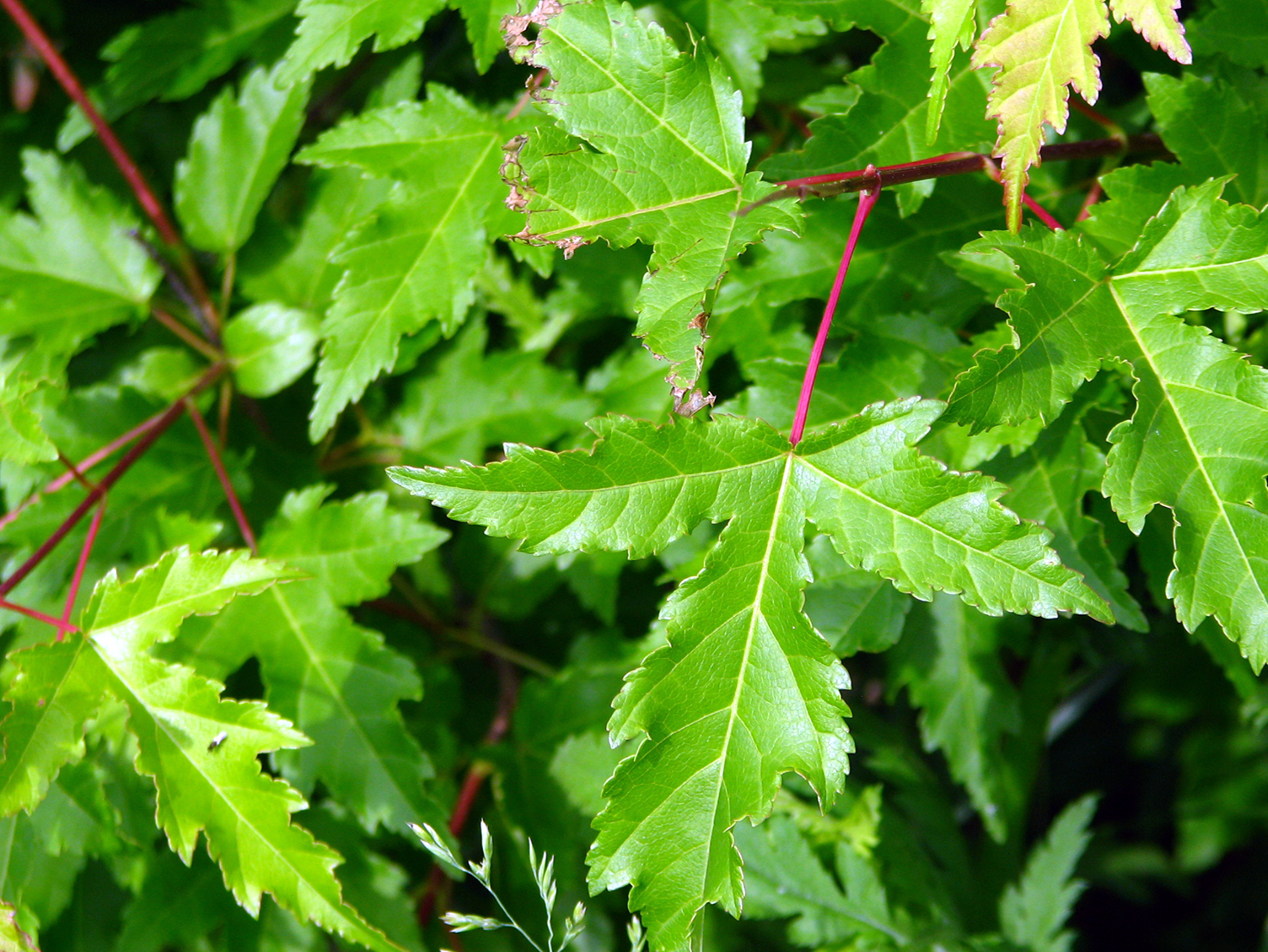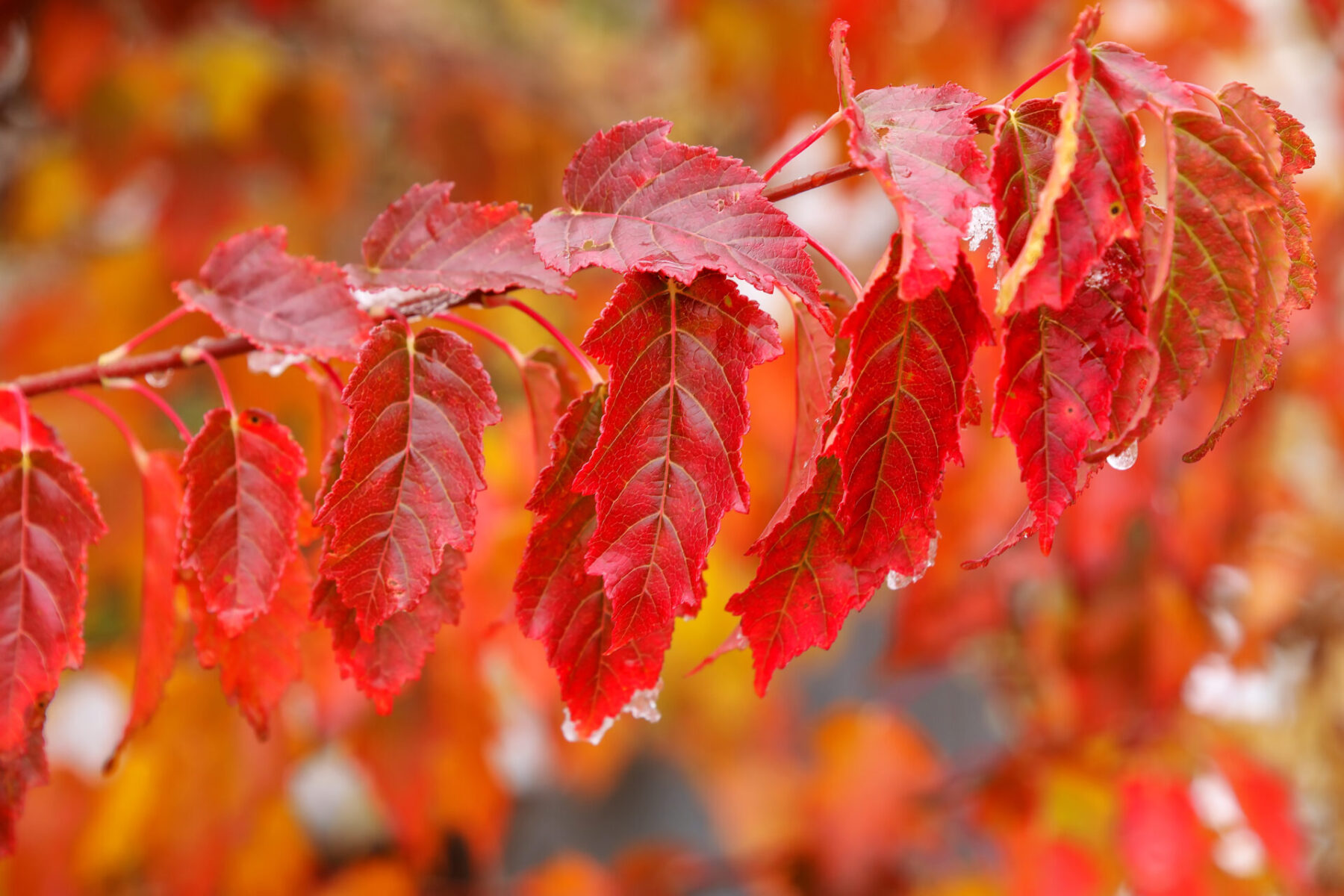
Also does well planted in a container as a patio plant. Landscape value: Can be used for hedges or screening, in group plantings, or as a small specimen. Insects and diseases: Generally free of pest and disease problems, but is susceptible to verticillium wilt.

Twigs: Stems are gray-brown and thin with a waxy coating. Fruit remains on the tree through the winter.īark: Grayish-brown with darker vertical groves as it ages. 75 – 1 inch long with wings that are almost parallel. Amur Maple is one of the only maples with fragrant flowers.įruit: Reddish samaras are.
Amur maple leaf full#
There is a lot of variety in fall coloration, and it isn’t consistent, but color is best when it’s planted in full sun.īuds: Reddish-brown, or lighter, buds are small (1/8 inch long) and waxy.įlowers: Borne in small (1 tp 1-1/2 inch diameter) clusters, yellowish white flowers appear in April and May at about the same time as the leaves. Leaves often turn a showy red but yellows can also be seen. Amur Maple turns color early in fall and foliage does not remain on the plant for long. The doubly serrate leaves are 1-1/2 to 3 inches long. Leaves are variable in shape and have three lobes with the middle lobe usually longer than the side two. Multi-stemmed specimens can grow as wide as they are tall.įoliage: Often one of the first trees to leaf out in spring, Amur Maple has dark shinny green leaves with a light green underside. Through pruning, it can be shaped to suit specific needs.Amur Maple can grow up to 25 feet, but typically grows to 15 - 18 feet. Growth habit and rate: This multi-stemmed maple is variable in shape and is often found as a large shrub, but can also be a small tree. Native habitat: Amur Maple was introduced in 1860 and is native to northern and central China as well as Manchuria and Japan.

Hardiness: Zones 3 to 8, but does better further north.


 0 kommentar(er)
0 kommentar(er)
